#geology of poland
Explore tagged Tumblr posts
Text
It's official! Skalickie Skałki (Skalice Rocks) confirmed as the oldest rock outcrop in entire Poland. Made of sillimanite gneisses they were said to be even a billion years old, but current estimations are closer to 600 mln yrs.
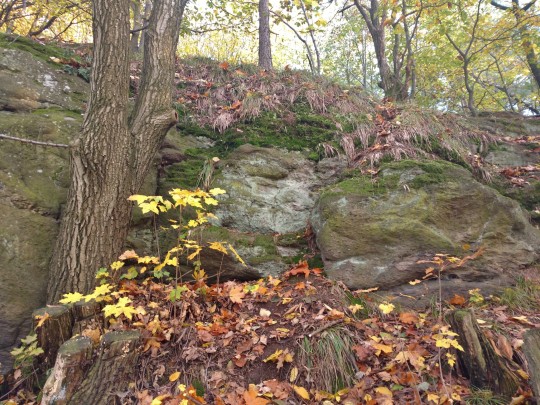

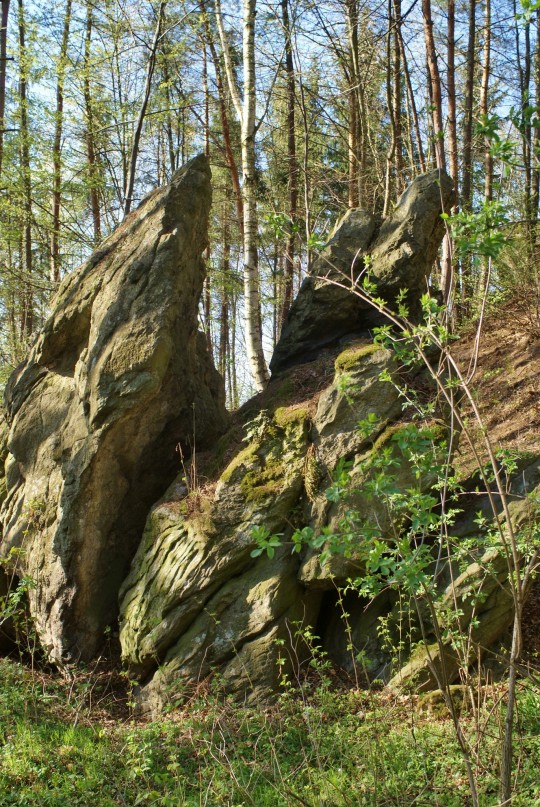
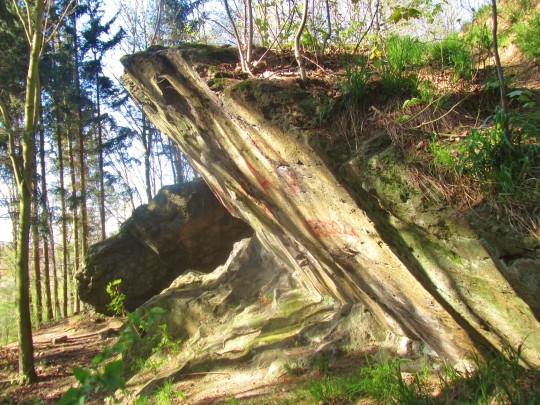

#My favourite spot#Skalice#wzgórza strzelińskie#lower silesia#geology#geotourism#geologia#poland#sudetes#geology of poland#my photography#rocks#sillimanite gneiss#proterozoic
301 notes
·
View notes
Text
Paleozoo enclosure based on the Owadów locality in Poland.
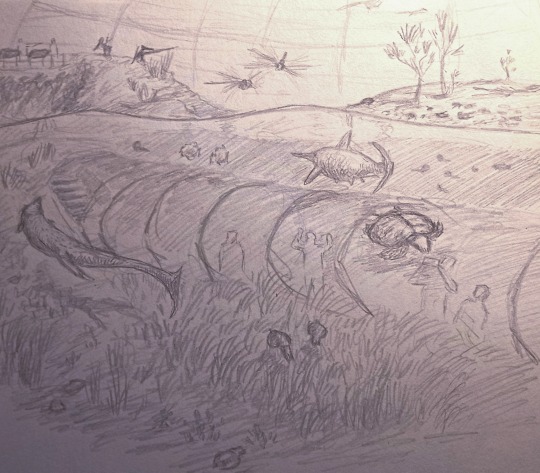
#biology#dinosaur#dinosaur art#dinosaurs#fossils#geology#mesozoic#palaeoart#palaeontology#paleoart#jurassic period#jurassic#solnhofen#poland#laggerstatte#paleozoo#sciart#pterosaur#ichthyosaur#metriorhynchid#crocodile#fish#zoo#prehistoric kingdom#jurassic park#dinosaur park#science
102 notes
·
View notes
Text
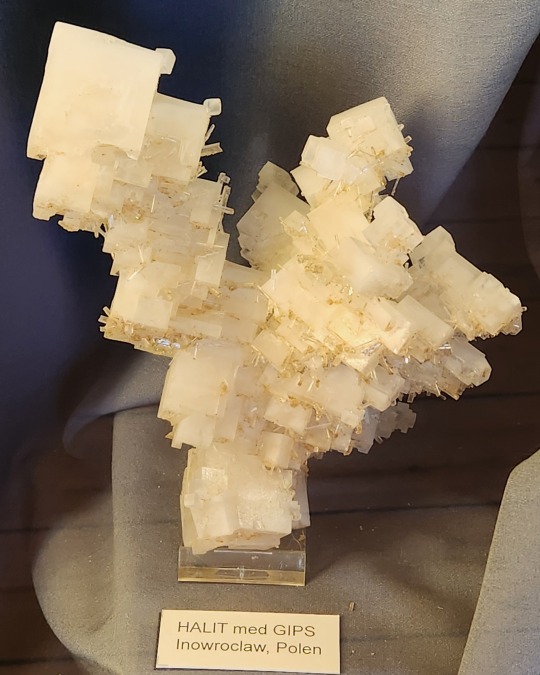
Halite
Natural History Museum of Denmark, Mineral Hall
#halite#geology#minerals#mineral hall#mineralology#poland#polish minerals#museums#museum#danish museums#natural history#natural history museums#natural history museum#natural history museum of denmark#danish natural history museum#copenhagen#denmark
113 notes
·
View notes
Text




Wieliczka Salt Mine
February 2024
#poland#salt mine#geology#grunge#dark#dark aesthetic#church#cathedral#krakow#rocks#x#religion#catholic#crystals#Europe#travel
15 notes
·
View notes
Text
1 note
·
View note
Text

Found last year on the coast of Baltic Sea. I think it was Dziwnów!
0 notes
Text
Everything You Need to Know About Crystals: Chrysoprase
The Stone of Venus
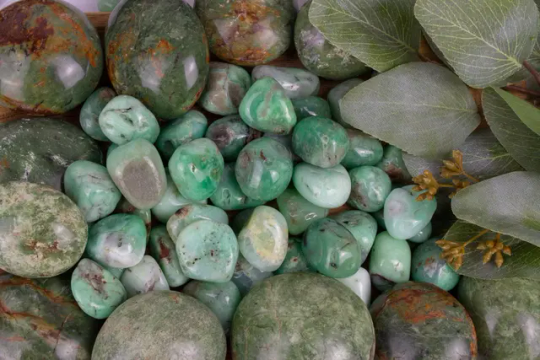
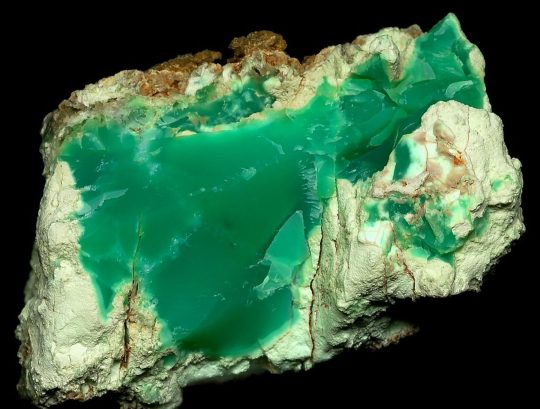
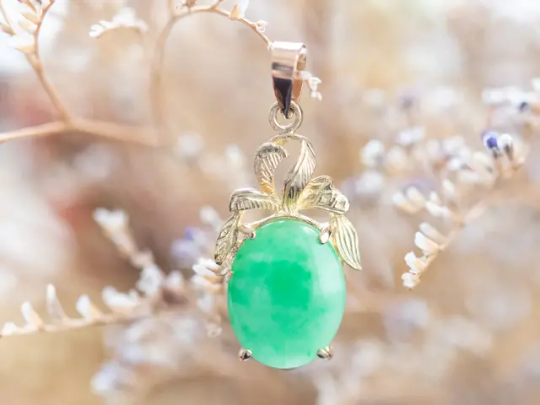
Requested by @acovenoftwo
Chemical Formula: SiO2
Color: Apple green, lemon
Rarity: Easy to obtain as a tumble stone, finer quality is expensive
Hardiness: 7
Type: Chalcedony
Chakra Association: Heart and Solar Plexus
Deities: Venus
Birthstone: May
Astrological Signs: Gemini, Taurus
Element: Water
Planet: Mercury
Origin: Formerly Poland, Now Australia, Brazil, Madagascar, Russia, Tanzania, USA
Powers: Encouraging development, Compassion, Tolerance, Growth, Forgiveness, Connection to Nature
Crystals It Works Well With: Mountain “jade”, Tourmaline, Smokey Quartz
How It is Created: Chrysoprase is a type of chalcedony quartz with a microcrystalline structure. Its color comes from nickel deposits, and it can be found in pale shades through to brighter green. Raw pieces have a granular appearance, similar to pieces of coconut, and a waxy sheen when polished.
History: Chrysoprase, called Stone of Venus because in antiquity it represented the goddess of divine love, the famous Venus, is a magnificent apple-green nickeliferous chalcedony belonging to the family of microcrystalline quartz. The ancient Egyptians also used chrysoprase for practical purposes such as sealing letters, but they would also wear pendants, amulets and other jewelry made of chrysoprase. For hundreds of years, the only major source of chrysoprase was a region of southwestern Poland between the Czech Republic and Germany, formerly known as Lower Silesia. This area has a complex geology and is extremely rich in all kinds of mineral deposits, including gold, silver, serpentine, quartz, marble, granite, alabaster—and chrysoprase. Stone artifacts from as far back as the Iron Age show the long history of Silesian carving and masonry. In the eighteenth century, Frederick II, King of Prussia (now part of Germany), conquered Lower Silesia. In particular, he wanted its deposits of green chrysoprase, which he used to decorate the halls of his favorite palace at Potsdam near Berlin.
What It Can Do:
Known as the healer of the heart space and helps connect you with infinite supply of compassion and love
Supports cardiac health and provides a centered peace
Helps people suffering from melancholy and manifests optimism and joy
Can be placed by homegrown herbs and vegetables to boost production
Perfect to artist as it increases creativity and talent
Encourages fidelity, forgiveness, compassion, and nonjudgmental thinking in relationships, while banishing greed and selfishness
Helps with inducing deep meditative states and promotes the love of truth
Calming and nonegotistical, creating openness in new situations
Stimulates fluent speech and mental dexterity, preventing you from speaking out unthinkingly in anger
Lifts oppressive and recurrent images, preventing nightmares, especially in children
Is said to detoxify heavy metals in one’s body and stimulate liver function
Is said to enhance fertility, reverse effects of infertility that are caused by infection and guard against STIs
Increases the absorption of Vitamin C
How to Get the Best Out Of: Wear as a necklace, bracelet, earrings or even use it in an elixir. Carrying chrysoprase for long periods attunes to the devic realm, a band of frequency found present on Earth which can connect you to nature and the planet directly
How to Cleanse and Charge: Can be cleansed briefly under running water then recharged overnight among a host of rock crystals for a few weeks. Cleanse during a rain shower for optimized cleansing,
Crystal Grid:
Healing for Children (Nightmares)
Shape: Fruit of Life
• 6 “issue” or calming stones
• 4 grounding crystals
• 2 light-bringing crystals
1. Hold your crystals in your hands and state your intention for the grid.
2. Lay the central keystone to represent your child.
3. Lay six crystals around the keystone to assist with the challenge or issue. (These crystalscan either represent a single issue, or different ones—whichever feels best to you. However,it may be more effective to address separate issues by laying individual grids.)
4. Lay four grounding crystals to anchor the grid at each corner of the “square.”
5. Lay a light-bringing crystal at the top and bottom.
6. Leave in place until the issue or issues have been resolved, remembering to cleanse thegrid regularly.
Crystals to use: Chrysoprase, Amethyst, Prehnite, Bloodstone
Sources
#witchblr#witch community#witchcraft#paganblr#occulltism#nature#witchcraft 101#crystal witch#crystals#crystal grid#witch books#witch resources#requested#chrysoprase#geology#rocks#venus
93 notes
·
View notes
Text
I now find myself reading letters by French speaking missionaries writing home about the court of Yongzheng, and in particular on Prince Yi’s keen interest in European affairs. One letter mentions how the Prince asked this missionary to keep him up to date on Russia’s invasion of Poland, Turkish interests in the Mediterranean Sea, and the political affairs of all the countries along the sea and land routes between China and continental Europe...
It’s the 1700s. Emperor Kangxi was learning latin for fun and believed drinking hot chocolate (gifted by a Portuguese diplomat) was good for one’s health. The former crown prince’s uncle was a Catholic convert, and often got into heated debates with his nephew, a devout Buddhist. The third prince learned several European languages from his foreign tutors (and spoke them rather well, according to the tutors), but his true passion was in creating and publishing anthologies of old Chinese literature. Emperor Yongzheng’s best subject in school was geometry, also learned from a European tutor. He also dabbled in meteorology and geology, and tasked his foreign advisors with procuring for him the latest measuring devices and inventions from Europe. Prince Yi, who was well informed of European affairs and had an eye on the lucrative potentials of international trade, successfully pushed through measures to open up China’s sea ports for international trade and was interested in sending diplomatic missions to France…
Unfortunately, both Prince Yi and Yongzheng died all too young and all too soon, before they could implement most their foreign policy plans. The new emperor closed the borders, repealed many of Yongzheng’s reforms, and put out the brief spark of interest in exploring, trading, and exchanging knowledge and technologies with distant peoples that had emerged under Yongzheng’s rule. It would be another hundred years until China emerged from its isolation…
2 notes
·
View notes
Text

These folks are a few examples of what I call « Biosomae ». I’ve been doodling them for ages, and I have a few ideas of how I’d eventually like to use them in a larger narrative. But for now they mostly exist as collections of doodle pages. Like this one, for example, which I drew during a weekend in Toronto for a congress of the Revolutionary Communist Party.
A Biosoma is generally recognized by their humanoid face/head with landscapes and other forms of nature rearing out of them. I like to imagine that these beings are huge, that each one is to-scale with the natural features of which they are composed.
The ones with trees jutting from their brows live in cliff faces and hilltops, where their heads sit like highland peaks rising from the earth.
The blue one in the middle is so large that their skull crests into an entire mountain range. Perhaps they slumber beneath the surface of the earth. (They certainly don’t look too happy to be woken up!)
By this logic, the yellow prairie-themed one in the bottom right is smaller, since the grasses they grow on their head are no more than a couple feet tall. But perhaps this is deceptive … maybe if you wander too long in the wheat and brush of the prairies you’ll eventually encounter a solitary hill growing huge stalks, many meters tall. And perhaps that hill might smirk at you.
The orange one in the top right is a bit of an outlier from what I would usually consider a Biosoma. Their birdlike features split into the half-remembered anatomy of a hawk’s wing. This might mean that they’re not a Biosoma at all. Or perhaps they are a different type, one inhabiting the smaller world of beasts and birds rather than the larger world of geology and dendrology. To be determined.
Obviously the Biosomae are inspired by old legends and folklore involving giants and other beings that sleep beneath the earth or that have been turned to stone. Closest to my heart, I think of Roche Bonhomme, « Old Man Mountain », a peak located just north of my hometown of Jasper, Alberta. But there are many such examples all over the world, from the Old Man of Hoy in northern Scotland, to the Giewont of Poland (a sleeping knight), to the Pedro da Gávea in Brazil or Lion Rock in Hong Kong. I think many more character designs such as Tolkien’s ents or even the interpretation of Te Fiti in Disney’s Moana influence my tendency to doodle these folks.
That’s all for today! Follow for more Goblines, Biosomae, Quicktrees and Poetry.
#Biosoma#Biosomae#Goblineveryday#Art#art by me#digital art#nonbinary#enby#nature#goblincore#goblin#folklore#folklore art#giant
2 notes
·
View notes
Text
Hello, i'm a guy from Poland, this will be a blog for my miscellaneous interests, maybe photos and some art. This is not my first blog but I needed a new one.

I am interested in geology and history. I draw, paint, write I might post all of these things here. I would really like to talk with people online. I like playing games but i can lose interest easily i like the Fallout series (first games too) and Skyrim, DBH, The Binding of Isaac, Disco Elysium and The Forest (and stuff i'm probably forgetting now). I like a LOT of other media i've read through so many Batman comics and watched so many movie adaptations. I am a plane fan i love planes but i never could get into building models i am not good at it. I also like watching movies my letterboxd sucks though, you should watch Cat Sick Blues by the way if you read this far.
4 notes
·
View notes
Text
I put way too much thought into my fic and now my plate is loaded with the following in order to even fucking write it:
-research the history of Poland/Lithuania from 1600s to the mid 1800s
-research what the hell mushrooms even are
-research the basic geology of Minnesota
-write a philosophical essay about fungi and the nature of being your own creation that cannot share the truth of being as you are with anything else because you're NOT anything else and truth itself can only ever be subjective
-learn what the fuck a LAN is
4 notes
·
View notes
Text


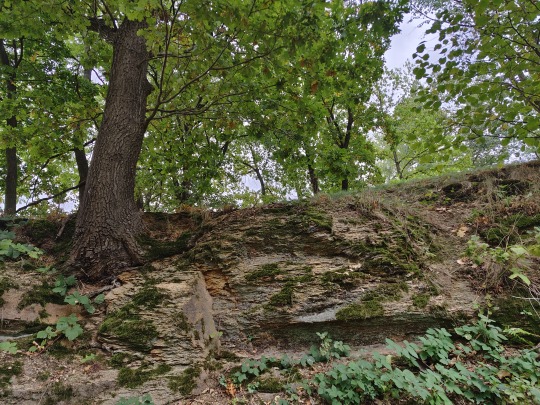
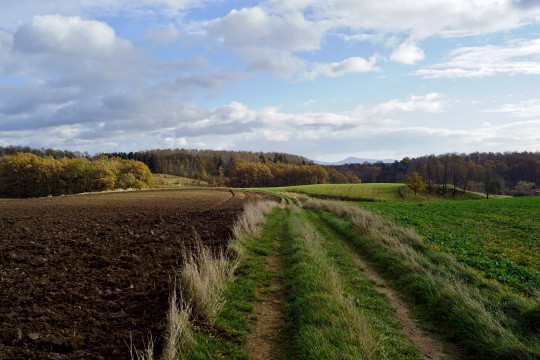
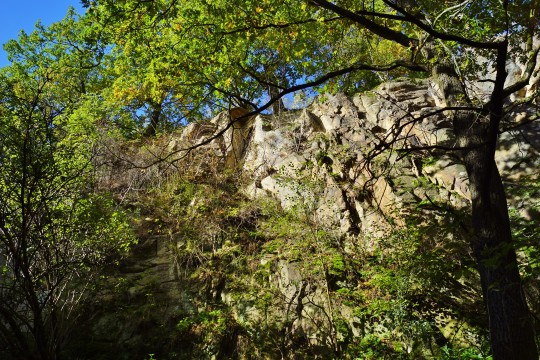

Bagieniec village lies on the line of the Tertiary Bagieniec-Paszowice fault, which is the north-western border of the Strzegom - Sobótka granite massif. Strzelnica hill, towering over the village, is the raised wing of this fault, built of the Paleozoic granite intrusion of Carboniferous age. The depressed part in which Bagieniec is located belongs to the Roztoka-Mokrzeszów Graben, filled with sediments of the Tertiary and Quaternary period.

The outcrops of Strzelnica hill show granite rocks called the Strzegom granite and products of their weathering.
#geology#lower silesia#geotourism#poland#geologia#geology of poland#carboniferous#granite#Równina świdnicka
17 notes
·
View notes
Text
Ronald M. Lewis

Ronald M Lewis, born February 18, 1936, of Elmira NY passed away recently after a short illness. He was the son of Alex Lewis and Celia (Sachs) Lewis. He is a native of New York City and graduated from the Bronx High School of Science and attended City College of New York majoring in geology and graduating in 1957. He completed graduate work in mineralogy and petrology at Penn State University.
He joined Corning Glass Company in 1966 as a researcher, where he co-invented the cellular ceramic substrate used in catalytic converters, which greatly reduces the amount of harmful pollutants in automotive emissions. In addition to Ron, the team consisted of Irwin Lachman and Rodney Bagley.
Ron was inducted into the National Inventors Hall of Fame in 2002 for his work on the the catalytic converter. He was awarded in Poland the International Ceramics Prize of the Academy for the Advanced Ceramics industry. He was the recipient of the 2003 National Medal of Technology which was awarded by then President George w Bush.
Lewis also held a National Science Foundation Fellowship, worked for Solid-State Materials Consulting, Ingersoll-Rand Inc., and served on the Energy Advisory Committee for U.S. Rep. Stanley N. Lundine.
He was a lifelong amateur astronomer and spent much time helping educate the public on all matters of astronomy through the Elmira-Corning Astronomical Society. Ron was also an avid eclipse chaser. He and his wife, Lenore, traveled the world to observe and photograph solar eclipses. He was also a dedicated Penn State football fan.
Ron was also very interested in gardening, and became a certified master gardener through the American Horticultural Society
He loved and was loved dearly by his wife, Lenore (Ruggere), and nieces LeeAnn Earl-Sedor (the late David Sedor, M.D.), Candy Scheatzle (John), and nephew J.B. Earl (Lori), and grand nieces and nephews Amanda and Bradley Sedor, and Allyson and Joseph Earl, Jr. Ronald was predeceased by his parents Alex and Celia Lewis and his sister Marilyn Lewis.
A Funeral will be at 10 AM on Monday, December 30th at Hugh B. Hughes & Son, Inc. Funeral Home, 1044 Wyoming Ave., Forty Fort.
Family and friends are invited to the funeral home on Sunday, December 29th from 2 PM until 4 PM.
In lieu of flowers, donations to invent.org or the Eileen M. Collins Observatory will be appreciated.
0 notes
Text
The issue with this line of thinking is it takes for granted just how much of our understanding of the world comes from contextual knowledge rather than individual intelligence.
One example I like to use is fossils. People have been finding fossils for as long as there have been people, but you need a lot of understanding of other fields to recognize what they actually are.
In Poland, dinosaur tracks were thought to be the Devil’s footprints. This isn’t because the people there were stupid, but what else were they supposed to think? They had no way of knowing that the world was as old as it was, let alone that giant reptiles lived there 200 million years earlier! Ammonite shells were thought to be petrified snakes because that’s the closest thing to them that the farmers and miners who found them would have encountered. In China, fossils were thought to be dragon bones, not because they were primitive or superstitious but because unless you’re working with a comprehensive background of geology it’s pretty hard to imagine a non magical way for bones to be embedded in rocks!
Now as you mention this is not a linear march of progress. Different people have access to different information at different times. There’s some compelling evidence that the Sioux were able to recognize the bones of Mosasaurs as those of extinct snakelike aquatic reptiles independently from European knowledge of extinction and fossilization. But people seek patterns and if we don’t have all the pieces it’s easy for our minds to go crazy when presented with something which seems impossible to explain.
And remember, this “sky pirate” stuff isn’t really that different from stuff that modern people believe. We just dress it up in sci fi language now and call them UFOs
so apparently in 815 CE there was a common belief that sky pirates sailed ships in the clouds and (working in collaberation with frankish weather wizards) stole all the crops that got damaged in storms and took them back to the cloud realm of magonia.
And this was apparently a common enough belief that an archbishop felt the need to write a treatise to debunk it and insist that only god controls the weather, which is the only reason we know about it.
there are three important points to take from this, i think
This is great inspiration for your next dnd game
Tropes that might seem relatively modern (like airship pirates) can often actually go WAY back
The stuff your average medieval christian actually believed in will often have very little resemblance to christianity. And thats before you even get to the proper heretics. EDIT: people keep asking for the source and its now been added multiple times in different reblog chains. I should have put it in the original post but i am a fool: https://sourcebooks.fordham.edu/source/Agobard-OnHailandThunder.asp
20K notes
·
View notes
Text
Siderite is an iron carbonate mineral found in various parts of the world.
Its name comes from the Greek word “sideros,” meaning “iron.”
However, what makes this mineral truly fascinating are the enigmatic Floaters found within some of its crystallizations.
Learn More here 👇 👇 👇
https://www.supernovaminerales.com/minerals/siderite-the-iron-mineral-with-mysterious-floaters/
#minerals #poland #mine #salt #sculpture #saltmine #saltsculpture #nature #geology #picoftheday #earth #crystals #rocks #warsaw #dom #architecture #allshots #webstagram #strzegom #polska #lubiepolske #instapoland #igerspoland #stones #gem #granitowesercepolski #bestofpoland #saltchandelier #thebestofpoland #collection
#supernova_mnrls
Hello guys we have this parcel of Botryoidal siderite on sale!
Take 20 specimens for only $99usd plus shipping fee 😊
#bursztyn #amber #balticamber #gdansk #jewellery #poland #jewelry #fashion #bernstein #naturalamber #art #beautiful #amberjewellery #polska #sea #style #look #amberjewelry #trojmiasto #dress #naturalstone #amberearrings #design #mariacka #beauty #gdańsk #sunset #bursztynbaltycki #nature #morze #supernova_mnrls
1 note
·
View note
Text
For '(expt 16 12), Karalis V5
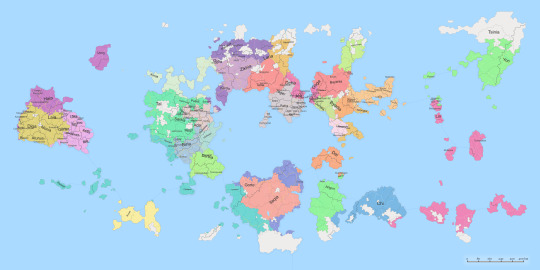
PREFACE
Greetings, this is only a mere sketch for my constructed world stuff, again... It is still a manifestation and political advocacy exercise but I would think that it is also a decent reflection of my worldview and a nice educational "grasp-the-world & iterate" method.
Granted, the following only have temporary labels due to further work yet to be done for the whole project "backend" (especially the linguistics and overtly immersive parts of it all). I am still iterating with some Civilization 5 & Stellaris playthroughs as baseline inspo, alongside a couple textual referee documents to assist this "frontend" of sorts.
So yeah... enjoy your stay.
First twelve "Major" Civs
Shoshones
Mayas
Morocco
Brazil
Poland
Incas
Babylon
Assyria
Netherlands / Venice?
Portugal
Korea
Carthage
Last eight "Major" Civs
Aremorica
Samoa
Inuit
Vietnam
Sumer
Angola
Hittites
Minoans
FourtyEight(48)-to-Sixty-Four(64) "Minor" Civs aka City-States
?
Cultures
Eyn = Levantine
Ibrad = Hungarian
Zebie = Basque
Tatari = Berber
Cao = Vietnamese
Shoshoni = Numic
Turchian = Turkish
Eqalen = Inuit
Tersun = Ruthenian
Temu = Nigerian
Hugues = English
Lueur = Mongolian
March = German
Teotlan = Nahuatl
Hawatcha = Korean
Ishtar = Mesopotamian
Taliyan = Iranian
Palche = Quechua
Aberku = Celtic
Sama = Polynesian
Medran = Castillian
Olivana = French
Bantnani = Karnataka
Syriac = Mesopotamian
Matipec = Mayan
Rzhev = Ruthenian
Matwa = Swahili
Hangzhou = Chinese
Chunhau = Cantonese
Mersuit = Inuit/Swedish
Treano = Italian
Arela = Portuguese
Hatris = Hittites / Lydians
Zapata = Byzantines / Mycenean Greeks
Nippir = Elam / Far-Eastern Mesopotamia
Irena = Minoan Greeks
Religions
Pohakantenna (Shoshoni / Numic pantheon)
Angakkunngurniq (Inuit pantheon)
Confucianism tradition (and dialects like Shinto…)
Al-Asnam (Celtic druidic pantheon)
Mwari Cult (Carib animistic pantheon)
Arianism (iterated from the defunct Christianity dialect)
Chaldeanism (Mesopotamian pantheon)
Calvinism (derived from the Protestant Reformation’s Huguenot Southern French, monotheism)
Tala-e-Fonua (Polynesian Samoan pantheon)
Hussitism (central slavic dialect of monotheism)
Jainism (communal humility & individualized ki monks culture)
Buddhism (inner way reincarnation & large monasteries)
Judaism
Zoroastrianism
Ibadiyya (Islam)
Canaanism (Carthaginian belief system)
Pesedjet (Numidan Hieroglyphics belief system)
Wakan Tanka (Blackfoot religion)
Intiism (Inca pantheon)
Tzolk'in (Mayan pantheon)
States
(~ to be written)
END
Worldbuilding revision workflow preview #1...
Galactic & meta-physical considerations (helps the mythological and Stellaris stages tremendously);
Micro-paracosms experimentations;
Stellar system conception
Interstellar neighbourhood;
Star design;
Orbits design;
Habitable planet(s) & Terrestrials;
Ice & gas giants;
Moons;
Habitable world conception
Albedo, atmospheric, tides & other key specifications;
GPlates & GProjector / geology stages;
Speculative biology / lively evolution stages;
Sapient life history simulationism runs stage (social life simulacres aka Firaxis' Civ 5 + FreeCiv);
Stellaris & post-Stellaris narratively-focused stages;
GLOSS systemic multimedia animated story-telling stage;
QGIS + OSM "present-day" geofiction stage;
Dreamworld, shifting sessions and manifestation life scriptings stage;
0 notes